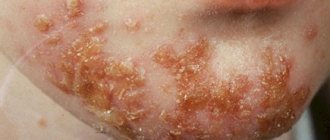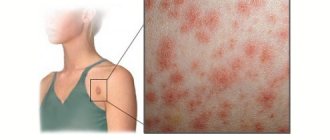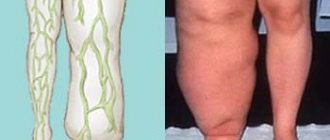Uveitis is a group of eye diseases associated with inflammation of the choroid.
The anterior part of the choroid consists of the iris and ciliary body, inflammation of which is called iridocyclitis or iritis. The posterior section of the vascular layer is located between the sclera and the retina and is responsible for the blood supply to these structures of the eyeball. If it becomes inflamed, the optic nerve and retina can be damaged. The vascular tract (uveal) is formed by both parts of the choroid. When one or more parts of the choroid are damaged, uveitis of the eye develops.
This disease often causes decreased vision and even blindness (in approximately 25% of patients). Uveitis requires urgent attention to an ophthalmologist, since the risk of developing various complications is high. The disease manifests itself as blurred vision, redness of the eyes, photophobia, “fog” before the eyes and lacrimation.
Symptoms of uveitis
Signs of the disease may vary depending on the location of the inflammatory process, the characteristics of the body, immunity, and the causative factor.
In most cases, the clinical picture of anterior uveitis includes several stages. Initially, the patient notes a slight deterioration in vision, “fog” before the eyes, and discomfort in the eye. As the pathology progresses, symptoms such as photophobia, lacrimation, and severe pain appear. In later stages, complete blindness may occur. When examined by an ophthalmologist, attention is drawn to persistent narrowing and lack of reaction of the pupil to light, and increased intraocular pressure.
Posterior uveitis is characterized by a long asymptomatic period; the first complaints appear already at a late stage of the disease. In some cases, slight redness of the conjunctiva may initially be noted. Most often, patients come to us when a scotoma appears - a “spot” in front of the eye or other visual impairment.
Why is uveitis dangerous?
Uveitis, the symptoms of which may not initially cause much concern, is considered in medicine to be a dangerous pathology.
It gives rise to multiple complications that worsen the quality of vision, up to its complete loss. Uveitis provokes an increase in intraocular pressure, which, by the way, can give impetus to the development of glaucoma. Frequent complications of uveitis include retinal infarction and detachment, as well as cataracts, papilledema, vasculitis with occlusion (sudden obstruction) of blood vessels or pupillary fusion.
Causes of uveitis
Inflammation of the choroid is most often associated with the following factors:
- bacterial infection (toxoplasmosis, syphilis, brucellosis, chlamydia, tuberculosis, etc.);
- viruses (herpes, cytomegalovirus, etc.);
- parasites;
- fungi;
- systemic inflammatory diseases, for example, rheumatism, ankylosing spondylitis, rheumatoid arthritis, Reiter's disease, etc.).
Often the cause of the disease is an eye injury, then along with a violation of the integrity of the membranes of the organ, an infection can occur. In rare cases, the cause of the pathology cannot be determined.
Causes
The main causes of uveitis are infections, allergies, injuries, metabolic and hormonal disorders, systemic and syndromic diseases.
Each of them can be caused by different factors.
- Infectious diseases are the largest group, occurring in almost 50% of cases. The agents are streptococci, herpesvirus and fungus. Typically, the infection develops after entering the blood vessels.
- Etiology of systemic and syndromic pathologies. It is associated with Reiter's syndrome, arthritis, multiple sclerosis, sarcoidosis and psoriasis.
- Allergic - occur with increased sensitivity to medications, vaccines and food intolerance.
- Hormonal imbalance in diabetes mellitus. Blood flow problems, as well as eye diseases such as keratitis, retinal detachment and vitreous ulcers.
- Problems of a traumatic nature were burns and any damage to the eye, including the ingress of foreign bodies.
No less common causes are decreased immunity and hypothermia.
Classification
Depending on the location of the inflammatory process, anterior, intermediate, posterior and generalized uveitis are distinguished. The anterior one is most common; it is characterized by inflammation of the ciliary body and iris. Intermediate uveitis is associated with damage to the retina, vitreous body, choroid and ciliary body. In posterior cases, inflammation of the optic nerve, retina and choroid occurs. If inflammation of all parts of the eyeball is observed, then they speak of the development of a generalized form of pathology - panuveitis.
Based on the nature of the inflammatory process, the following types of uveitis are distinguished:
- serous;
- fibrinous lamellar;
- purulent;
- hemorrhagic;
- mixed.
In origin, inflammation of the choroid can be primary or secondary. The former occur in the presence of diseases not related to the organ of vision, the latter – in the presence of an existing eye pathology.
According to the clinical course, acute and chronic uveitis is distinguished, which is characterized by slow progression and erased clinical symptoms. Based on morphological characteristics, inflammation is divided into granulomatous and non-granulomatous.
How does uveitis occur?
This disease is common. The choroid or uveal is the iris, ciliary and ciliary body, choroid, which is located under the retina. Therefore, the following forms of uveitis can be distinguished: cyclitis, chorioretinitis, iritis, iridocyclitis. If the disease is not treated promptly, blindness may occur.
Uveitis occurs due to the fact that the vascular network of the eye is branched, and blood flow in it can often slow down. Because of this, problems arise with the choroid, which cause inflammation.
Diagnostics
Early detection of inflammatory changes in the choroid plays a huge role in treatment - the earlier the disease is diagnosed and therapy is started, the more favorable the prognosis. If a patient does not see an ophthalmologist for a long time, he is at risk of developing pathologies such as cataracts or secondary glaucoma. Anterior uveitis is dangerous due to the risk of synechia formation or complete closure of the pupil. With the posterior type of pathology, clouding of the vitreous body may occur, and inflammatory changes in the retina or optic nerve papilla may occur.
All diagnostic procedures must be performed by an ophthalmologist. The diagnosis can be confirmed by the results of a biomicroscopic examination of the eye, fundus examination or ultrasound scanning of the eye. An important role is also played by assessing the general condition of the patient’s body and his immune status. For this purpose, laboratory tests are prescribed - blood and urine tests. To determine the pathogen, skin bacteriological tests are performed - this is necessary not only to determine the cause of the disease, but also to select antibacterial drugs.
The problem in prescribing the necessary therapeutic procedures is that only in a third of cases is it possible to establish the true cause of the disease. Because of this, drug therapy is often represented by means of a general pathogenetic effect on the disease.
Diagnosis of ocular uveitis
In the diagnosis of uveitis, an important role is played by the patient’s medical history and information about his immunological status. With the help of an ophthalmological examination, the localization of inflammation in the choroid of the eye is clarified.
The etiology of ocular uveitis is clarified by skin testing for bacterial allergens (streptococcus, staphylococcus or toxoplasmin). In the diagnosis of a disease of tuberculous etiology, the decisive symptom of uveitis is the combined damage to the conjunctiva of the eyes and the appearance of specific pimples on the patient’s skin - phlyctenas.
Systemic inflammatory processes in the body, as well as the presence of infections when diagnosing ocular uveitis, are confirmed by analyzing the patient’s blood serum.
Treatment
All therapeutic procedures must be carried out by an ophthalmologist; sometimes the involvement of other specialists is required. The time factor plays a very important role in the treatment of this disease - it is important to establish a diagnosis as early as possible and begin etiotropic and pathogenetic treatment. All these measures are aimed at reducing the likelihood of complications that can lead to significant vision loss or blindness. At the same time, treatment is prescribed aimed at eliminating the cause of the disease.
As for treatment with folk remedies, this approach is extremely undesirable - this method of treatment almost always leads to a deterioration in the patient’s condition. Treatment of inflammatory processes should include the prescription of medications - mydriatics, steroid hormones and drugs that suppress inflammatory processes at the systemic level.
Mydriatics are prescribed to reduce tension in the ciliary muscle, which makes it possible to reduce the risk of developing fusion between the lens capsule and the iris (synechia). Drugs in this group include the following:
- tropicamide;
- phenylephrine;
- cyclopentolate;
- atropine.
When the infectious nature of uveitis is established, antibiotics or antiviral agents are prescribed (depending on the type of infectious agent). If the cause of the disease is systemic inflammatory diseases, then NSAIDs and cytostatics are used. For allergies, antihistamines are prescribed.
An important role in the treatment of uveitis is played by the local use of steroid hormones (prednisolone, dexamethasone, betamethasone). For this purpose, drugs are used in the form of ointments, subconjunctival, sub-Tenon, parabulbar injections are made, and instillations are carried out into the conjunctival sac. If steroid therapy fails, systemic immunosuppressive agents are prescribed.
Surgical treatment is required if complications develop. In this case, the synechiae of the iris are dissected, and cataracts, glaucoma, and retinal detachment are treated. If iridocyclochoroiditis develops, a vitrectomy (removal of the vitreous) or removal of the entire eyeball may be necessary.
How is ocular uveitis diagnosed? Treatment of the disease
With uveitis, complications are especially dangerous.
Therefore, in order to prevent them, it is important to remember that if even a slight redness of the eye appears, which lasts for several days, you should definitely consult an ophthalmologist. It is very important to pay attention to the symptoms indicating uveitis in time! Treatment of pathology will be more successful with early detection of the inflammatory process and accurate diagnosis of the disease. For this, modern medicine uses biomicroscopic examination, fundus ophthalmoscopy, intraocular pressure measurements, eye tomography, etc. And additional studies in the form of blood tests and fluorography will help clarify the cause of the disease. After all, it often depends on it whether the inflammation will return again and again.
Depending on the etiology of ocular uveitis, treatment is both general symptomatic and, after diagnosis, specific. As a rule, it is carried out with the help of antibiotics, sulfonamides, vasodilators, antihistamines and neurotropic drugs. For local therapy, eye drops and ointments are used. Immunostimulation also plays a significant role in it. Drops that dilate the pupil are also used.
In addition, physioreflexotherapy, laser and, in some cases, surgical treatment are used.
Treatment of uveitis in St. Petersburg
Uveitis is a disease that can lead to the development of severe irreversible changes in the eye. Therefore, it is important to choose a clinic that has all the necessary diagnostic and treatment tools required for successful treatment of this disease.
The medical center will provide all conditions for eye restoration in case of inflammatory diseases of any etiology and severity. Our specialists will do everything necessary to achieve the maximum effect from treatment, both medicinal and surgical. The drug treatment regimen is selected individually based on the examination results. An integrated approach to treatment makes it possible to achieve the fastest possible cure for the patient and restoration of vision.
You can make an appointment with an ophthalmologist of the highest category or learn more about other services from our center in the “Ophthalmology” section.
Prognosis and prevention of uveitis
Comprehensive and timely treatment of acute anterior uveitis, as a rule, leads to recovery in 3-6 weeks. Chronic uveitis is prone to relapse due to exacerbation of the leading disease. A complicated course of uveitis can lead to the formation of posterior synechiae, the development of angle-closure glaucoma, cataracts, retinal dystrophy and infarction, optic disc edema, and retinal detachment. Due to central chorioretinitis or atrophic changes in the retina, visual acuity is significantly reduced.
Prevention of uveitis requires timely treatment of eye diseases and general diseases, exclusion of intraoperative and household eye injuries, allergization of the body, etc.
Key points
- Inflammation of the uveal tract (uveitis) may involve the anterior segment (including the iris), the middle uveal tract (including the vitreous), or the posterior part of the choroid.
- Most cases are idiopathic, but known causes of uveitis include infections, trauma, and autoimmune diseases.
- Anterior uveitis most often presents with eye pain, photophobia, redness around the cornea (ciliary flush), and, on slit lamp examination, cells.
- Middle (peripheral) and posterior uveitis usually present with less pain and redness, but more severe vitreous opacities (“floaters”) and blurred vision.
- The diagnosis is confirmed by slit-lamp examination and ophthalmoscopy (usually indirect) after pupil dilation.
- Treatment should be prescribed by an ophthalmologist and usually includes topical corticosteroids and mydriatic drugs.
First aid to a patient
Before use, be sure to consult with your doctor.
Chamomile. Pour a glass of boiling water over a bag of chamomile or 2 teaspoons of dry raw materials, cover and leave for 30-45 minutes, strain and rinse the inflamed eye with the resulting infusion. Do the procedure 4-5 times a day. Chamomile has antimicrobial, anti-inflammatory and antiallergic effects.
Calendula. This plant, like chamomile, helps relieve inflammation, destroy pathogenic microflora from the surface of the eyes, and soothe the eyes. To prepare a folk remedy, pour 1 tbsp. spoon of calendula with a glass of boiling water, leave it covered for 40 minutes, strain and use as a rinse 2 times a day, for a course of 2 weeks.
We invite you to familiarize yourself with Bronchiectasis (bronchiectasis, bronchiectasis, infected bronchiectasis, panbronchiolitis, panbronchitis)
Aloe. Place 2 well-washed aloe leaves in the refrigerator for 2 days, then squeeze the juice out of them, dilute it with clean water in a ratio of 1 (juice) to 10 (water) and use as eye drops 2 times a day, for a course of 10 days.
Honey. Take a comfortable lying position and, closing your eyes, smear your eyelids with natural honey. Keep it on your eyes for about 30 minutes and then wash it off. Do the procedure once a day. Read this article on how to choose real honey.
When treating uveitis, you can use some traditional medicine methods, after discussing the possibility of such treatment with your doctor:
- You can use crushed marshmallow root. To do this, you need to pour 3-4 tablespoons of marshmallow root into a glass of water at room temperature. You need to infuse it for 8 hours and then use it for lotions.
- A decoction of chamomile, rose hips, calendula or sage helps with uveitis. To prepare it, you need 3 tablespoons of herbs and a glass of boiling water. The mixture should infuse for about an hour. Then you should strain it and rinse your eyes with this decoction.
- Aloe can also help. You can use aloe juice for eye drops, diluting it in cold boiling water in a ratio of 1 to 10. You can make an infusion from dry aloe leaves.
As a rule, folk remedies are additional treatment options that are used comprehensively. Only timely adequate therapy for an acute inflammatory process in the eyeball gives a good prognosis, that is, it guarantees that the patient will recover. This will take a maximum of 6 weeks. But if this is a chronic form, then there is a risk of relapse, as well as exacerbation of uveitis as the underlying disease. Treatment in this case will be more difficult, and the prognosis will be worse.
Alternative medicine methods are used as an additional measure to treat ocular uveitis. However, before starting such therapy, you should consult your doctor. The following recipes are characterized by the greatest effectiveness:
- Rinsing the eyes with a medicinal infusion. To prepare it, you need to take chamomile, sage and calendula flowers in equal proportions. Approximately 3 tablespoons of the crushed mixture should be poured into a glass of boiling water and left for about an hour. It is recommended to wipe the affected eye with the resulting product until it is completely cured.
- Healing drops. To prepare the product, you will need to dilute aloe juice with boiled water in a ratio of 1:10. The solution is administered 1 drop into the affected eye, but not more than 3 times a day.
- Potassium permanganate. A freshly prepared weak solution can be used to treat your eyes daily. It is a good antiseptic that is used in many medical fields.
Compliance with specific nutritional recommendations for a diagnosis of uveitis is not required. However, a balanced diet can speed up the healing process by improving the functioning of the whole body. The condition of the visual apparatus can be improved by introducing vitamins D and A into the diet. They are found in large quantities in cod liver, dairy products, and seaweed eggs.
In the initial forms of the disease, the doctor may prescribe Midrimax.
By dilating the pupil, they will prevent it from completely overgrowing, which will allow the patient to maintain visual ability. An additional effect is a decrease in intraocular pressure.











